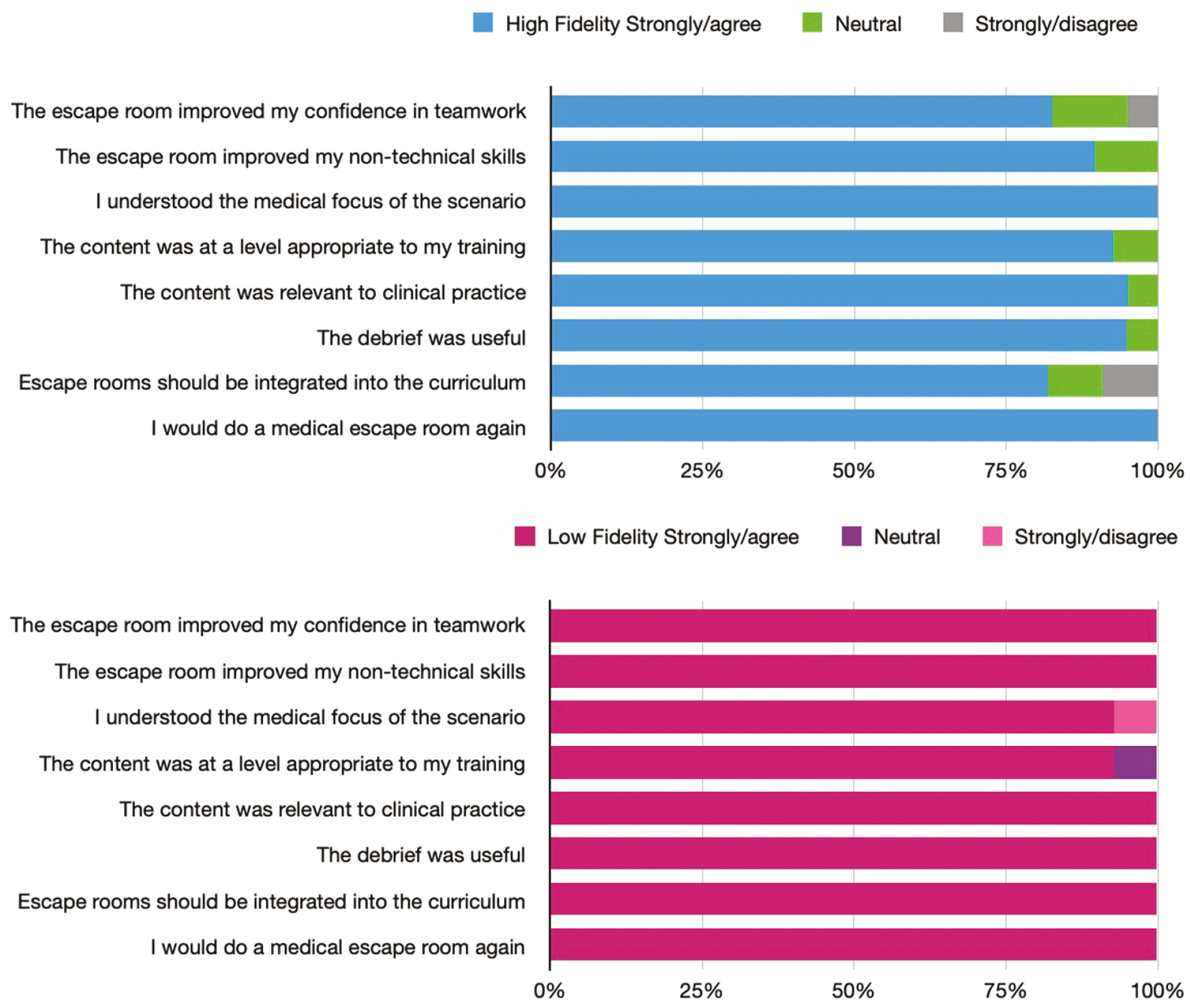
Medical escape rooms (MERs) are an increasingly popular game-based learning modality where participants solve puzzles to manage patients. They are delivered in a simulation-based format, amalgamating the principles of applying A-E assessments and human factors to clinically inspired puzzles to allow safe management of a simulated patient [1]. In comparing self-designed high-fidelity and low-fidelity formats, the aim is to assess the learning impact of these activities and understand the range of values gained in the different formats in correlation to their impact on goal orientation and learning outcomes.
Four MERs were designed and delivered over 4 months. Two involved high-fidelity manikins, with participants performing A-E assessments of patients parallel to puzzle-solving. Two were delivered as low-fidelity MERs, with no manikin, but a series of puzzles which participants solved linearly, devising a diagnosis, management plan and handover to seniors. Participants were penultimate-year medical students in small groups facilitated by four faculty. The same cohort participated in both low and high-fidelity sessions.
Feedback was collected on a 5-point Likert scale, rating self-assessed change in confidence and non-technical skills and the relevance and utility of MERs in both formats.
All MERs were well-reviewed, with all participants (n= 54) responding strongly agree or agree that they would do another MER. 82% of high-fidelity participants and 100% of low-fidelity participants felt MERs should be integrated into the curriculum. While all aspects of feedback were overwhelmingly positive, the low-fidelity MER showed more consistent positive feedback, with over 90% of participants strongly agreeing or agreeing with all positive statements, whereas this fell to over 81% in the high-fidelity cohort (Figure 1-A122).


Although both are highly rated, low-fidelity MERs may provide a more consistently positive learning experience for students. This may be due to the reduced pressure on students in the low-fidelity setting, in a room with only puzzles and few other distractions, as opposed to a degree of cognitive overload in managing a patient in real-time alongside puzzles in high-fidelity settings [2].
Moreover, faculty who delivered both formats of MER noticed that in high-fidelity formats, participants’ focus remained on the patient rather than the puzzles, and the reverse was true in the low-fidelity sessions, where participants became focused on individual puzzles without applying clinical thinking to the overall scenario.
The two formats are likely to prioritise the training of different skill sets [3], and thus, they may be most beneficial when used in combination.
Authors confirm that all relevant ethical standards for research conduct and dissemination have been met. The submitting author confirms that relevant ethical approval was granted, if applicable
1. Guckian J, Eveson L, May H. The great escape? The rise of the escape room in medical education. Future Healthcare Journal. 2020;7(2):112–115.
2. Nicolaides M, Theodorou E, Emin EI, Theodoulou I, Andersen N, Lymperopoulos N, et al. Team performance training for medical students: Low vs high fidelity simulation. Annals of Medicine and Surgery. 2020;55:308–315.
3. Munshi F, Lababidi H, Alyousef S. Low- versus high-fidelity simulations in teaching and assessing clinical skills. Journal of Taibah University Medical Sciences [Internet]. 2015;10(1):12–5. Available from: https://www.sciencedirect.com/science/article/pii/S1658361215000141.